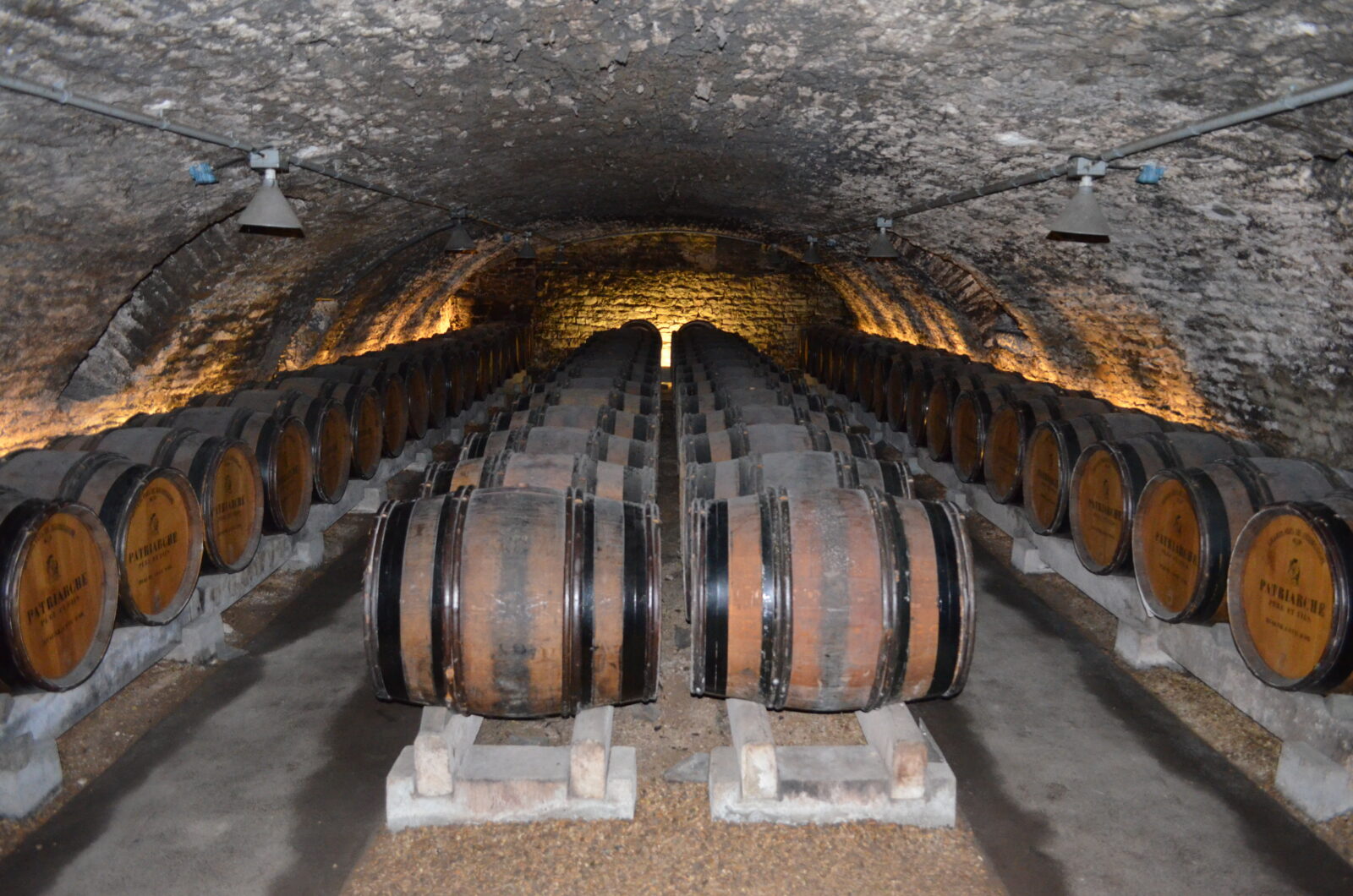
No, Quercus Petraea wasn’t a Roman emperor – it’s the scientific name for French oak. It was also my excuse for grabbing a nice Bordeaux Fifth Growth from the Wine Concepts cellar in the quest for greater wine wisdom. That’s what I call following the science.
- The prestigious Bordeaux “1855 Classification” includes 61 left bank red wines designated “First” through “Fifth” growths – see our Bordeaux primer.
Wine and oak have been best friends for a millennium. The use of oak barrels started out as a convenient means of storing and shipping, but soon it was discovered that oak could improve wines. Basically, oak affects a wine’s texture and flavor, and that’s usually -- but not always -- a good thing. Oak also allows small amounts of oxygen into wine, helping it age gracefully. (The barrels shown above are from a cellar in Burgundy).
- All oak isn’t created equal. A winemaker’s decisions about the type of oak, the level of toasting, and whether to use old or new oak will substantially impact what’s in the bottle. The goal is for the oak to blend seamlessly into the wine and not dominate it. Unfortunately, some winemakers oak the heck out of their wine so that it covers up the other flavors and aromas and tastes like oak soup.
- Not every wine is suited to oak. Most serious red wines are aged in oak, although lighter-bodied reds, such as Pinot Noir and Italian reds, may be aged in barrels that have been used for several years and therefore impart lesser oak notes. (Winemakers often use a blend of wines aged in new and old barrels to achieve their desired style). Chardonnay, full-bodied and flavorful, has an affinity for oak if not overdone. But many lighter whites, such as Sauvignon Blanc and Riesling, do not.
Two general species of oak are used in wine-making: American and French oak. The less-expensive American oak is lower in tannin, high in aromatics, and imparts a touch of sweet vanilla and coconut. It’s widely used in Spain, North and South America and Australia. French oak is more subtle, and it imparts vanilla, toast, and cedar notes.
- The impact of oak on a wine is affected by the degree of “toast” used by the cooper in making the barrels. Oak is aged for several years and then "toasted” over a fire to bend the staves into shape. The degree of toast brings out certain flavor compounds. Light toast imparts spicy, clove, coconut, and sweet vanilla notes. Heavy toast tends toward smoky, butterscotch, coffee, and toffee notes.
- The length of time that a wine ages in a barrel also affects the wine. To get a sense of this, try a Rioja Crianza (12 months in oak), Reserva (typically 24 months or more), and Gran Reserva (typically three years or more).
- Oak barrels are expensive, around $1,000 – 1,200 apiece, so they’re seldom used for inexpensive wines. Some cheap wines are made using wood chips to impart an oak flavor, but the wines using this technique can turn pretty nasty after a year or two.
- Some “lesser” Bordeaux chateaux use old barrels from a “grander” château, which brings us to . . .
Our wine of the week is a 2012 Chateau D’Armailhac from Pauillac in Bordeaux (about $70 retail for current vintages). The vineyard is located next to, and is owned by, the First Growth Château Mouton Rothschild. One third of the wine is aged in new barrels, one third in year-old barrels, and the remaining third in two-year-old barrels; some of the older barrels were first used for the Château Mouton. The wine is a blend of 54 percent Cabernet Sauvignon, 29 percent Merlot, 14 percent Cabernet Franc, and 2 percent Petit Verdot.
- This was an excellent wine, and good value. It’s deep red, with aromas of dark fruit, spice, coffee, and clove. On the palate, it’s powerful and full-bodied, with notes of red fruits, spice, pepper, and coffee. The wine is complex and well-balanced, with a moderate alcohol level of 13.5 percent and a pleasant medium-to-long finish.
- This wine should be decanted for an hour or so, both to allow it to breathe and because it has a fair amount of sediment. Pair it with any meat dish, or even pasta.
Cheers!
